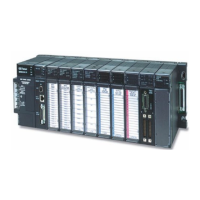GFK-1322A Chapter 5 Troubleshooting 5-3
5
Valid Bits
Each network variable is assigned a valid bit in the %I reference area associated with each
module. For input variables, a ‘1’ in the valid bit location signifies valid data. The bit will be
cleared to ‘0’ if the data were not updated and the Max Receive Time (if configured to be non-
zero) has expired. Thus the PLC logic can determine whether any data is not updated within a
specified time period of time. This can be useful for setting up a “heartbeat” to sense network
integrity. On power up, the input valid bits are all set to zero until the first update is received.
For output network variables, the bit will be cleared if the variable was bound using acknowledged
service and a message is sent that does not receive acknowledgment. By monitoring the state of
this bit, the PLC logic can determine whether an output was reliably transmitted.
The Valid bits are included in the total length configured in the %I reference area.
Note
An input network variable (a node input) is an output from the LBIM. An output
network variable (a node output) is an input to the LBIM.
Input network variables:
If the bit is 1: Normal operation.
If the bit is 0: The NV has not been updated
and
the Max Receive Time (if configured to a
non-zero value) has expired. This indicates that an input heartbeat has not been received.
Output network variables:
If the bit is 1: Normal operation.
If the bit is 0: The NV has been bound using acknowledged service, the NV was updated,
and
an Update Failed condition was detected (ACK not received.)
Or
, The first update has not been sent. (Normal operation during powerup.)
Wink Function
The L
ON
T
ALK
wink function is used during network installation to identify unconfigured
nodes. If there is more than one unconfigured node on the network, L
ON
T
ALK
wink network
management messages can be used to differentiate the nodes.
When the LBIM receives a wink message, it responds by flashing the IN MSG and OUT
MSG LEDs together five times.

